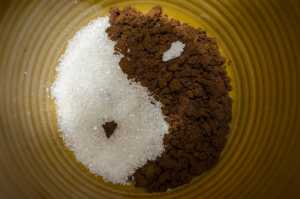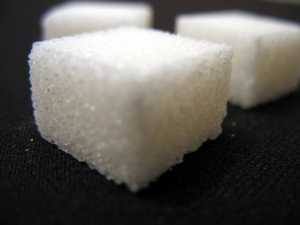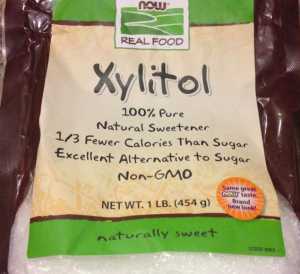Xylitol Side Effects
In this article, we dig deep into what Xylitol can do for you, and the possible Xylitol side effects you might encounter if you choose to go the Xylitol route.
Xylitol is becoming more and more popular as a sugar substitute. It is a 5-carbon ingredient that can be categorized as “sugar alcohol”.
The main reasons are that studies are finding that Xylitol, and other sugar substitutes like sorbitol are having significantly smaller effects on blood sugar levels than traditional sucrose sugars.
Do I Want a GREAT Xylitol product (and, I don’t have a dog)?
Don’t click the link above before you read about what Xylitol can do to your dog below.
For those that are borderline Type 2 diabetic, or have other issues from blood sugar levels, this can be HUGE!
What Are the Benefits of Xylitol?
Like I mentioned before, one of the biggest positive side effects of Xylitol is how it is processed by your body when compared to sucrose sugars.

“Summer Berry’s” by Nana B Agyei(CC BY 2.0), via Flickr.com
Xylitol can be found naturally in many vegetables, and many fruits. Fruits and vegetables like:
- Plums
- Strawberries
- Raspberries
- Cauliflower
Some of the benefits of Xylitol are:
- Prevents Tooth Decay (if in high enough amounts)
- Kills Cancer Cells (certain types)
- Prevent middle ear infections
- Helps with dry mouth issues
- Provides energy in food sources
- Beneficial for mineralization
- When eaten by mothers, reduces the mother-child transmission of mutans streptococc (which reduces caries in their children)
- Reduces the risk of caries in children
- Helps fight the yeast candida albicans
- When used in a nasal spray can reduce sinus infections, allergies and asthma
- Increase the production of collagen (this can help keep your skin looking younger)
- Can improve bone density (found in studies using rats)

“Ying Yang/Coffee Sugar” by Jonas Hösler(CC BY 2.0), via Flickr.com
Bad side effects for humans have been found to be rare when consumed in “normal” levels (less than 40 grams per day) for short periods of time.
Typical foods you find on grocery shelves don’t contain very high amounts. If you have diabetic issues, no more than 70 grams spread throughout the day is recommended.
There are many anecdotal articles about Xylitol possibly causing tumors. But, so far we’ve been unable to track down sources to those findings. Several comments on these articles question their validity as none of them really state how much you have to consume before this is a valid risk.
Children shouldn’t consume more than 20 grams of Xylitol per day.
Does Xylitol Really Taste Good?

“Sugar” by Uwe Hermann(CC BY-SA 2.0), via Flickr.com
Of course, taste is completely subjective. So, we can’t tell you if you will like the taste of Xylitol.
However, we’ve gained some experience while researching for this web site. While reviewing products for the Dazzling White Teeth HQ web site, we have run across numerous reviews where taste is mentioned with regard to Xylitol.
Our experience is that most are very happy with the taste of Xylitol, “considering the product is sugar free”.
It’s our belief that with expectations lowered, Xylitol is surprisingly good. However, when marketed as just an ingredient that takes the place of sugar, the feedback comes back that Xylitol isn’t quite as good as good old sugar.
Can Xylitol Hurt My Pets?

“Dog shaming” by odonata98(CC BY-ND 2.0), via Flickr.com
YES!!
If your dog ends up eating one (or all) of your “sugar-free” dessert treats that happens to be made with Xylitol, you should take them to the vet immediately!
Even in small amounts (see this article), the recommendation is to be safe not sorry with your loved one.
The Xylitol side effects can be deadly, so don’t take any chances and get to a vet as fast as you can.
What Should I Look Out for with Xylitol?
Many “truthers” out there want you to run to your pantry or glove compartment and throw out all of your Xylitol products.
From what we’ve found during our research of Xylitol side effects is there are more positives than negatives when it comes to human (not dogs!) consuming Xylitol.
Like just about anything, too much can be a bad thing.
Many of the articles that discuss bad side effects typically have a disclaimer in the fine print or a side comment that says something like “if you consume very high levels for several years…”.
Also, like many ingredients out there, some people may react badly to Xylitol.
Here are some of the bad side effects that have been identified around the internet. So, if you find you have one of these, you might want to consider cutting Xylitol out of your diet.
Or, at the very least, to stop binge eating palettes of Xylitol products each day.

“Constipation?” by david murphy(CC BY-SA 2.0), via Flickr.com
Possible side effects seen:
- Diarrhea
- Gas
- Bloating
- Constipation
- Unwanted weight gain
However, it seems clear from many articles that effects like these are not typical. Especially when Xylitol is consumed in small quantities (under 15 grams a day).
Xylitol and Dental Health

“Xylitol” by Alex Juel(CC BY-SA 2.0), via Flickr.com
One thing that is very evident when researching Xylitol side effects is that it does have a positive effect on dental health.
However, to see any lasting or obvious results, you have to consume Xylitol about 3 times a day consuming small amounts you might find in chewing gum (typically 5 or 6 grams).
Even articles that seemed to be trying to prove negative effects of Xylitol concede that there are dental benefits from using Xylitol in reasonable quantities.
Xylitol and Teeth Whitening
You’ve come to Dazzling White Teeth HQ in search of information about Xylitol side effects.
Why wouldn’t we comment on how well Xylitol helps with making your teeth white?
Well, it doesn’t.
Teeth whitening products don’t use Xylitol to help whiten your teeth.
However, many products that do whiten your teeth use Xylitol.
The purpose for including Xylitol is to make the chemicals that are effective with teeth whitening taste better.
The Best Form for Consuming Xylitol
Most of the articles I found that talked about using Xylitol, consistently recommended using it by chewing gum anywhere from 3 to 5 times a day.
Recommendations were to chew a piece of gum that contains Xylitol after each meal or snack.
Regardless of whether the gum has Xylitol, a habit like this can do wonders for not only the health of your teeth, but also for keeping your teeth white.
Do I Want a GREAT Xylitol product (and, I don’t have a dog)?
The simple act of chewing gum after each meal can act to scrub any foods that potentially might stain your teeth.
So, even if you decide you don’t want to take any chances with Xylitol side effects, adding the habit of chewing gum after your meals and snacks can be a great way to keep your teeth healthy and white.
Sorry, the comment form is closed at this time.